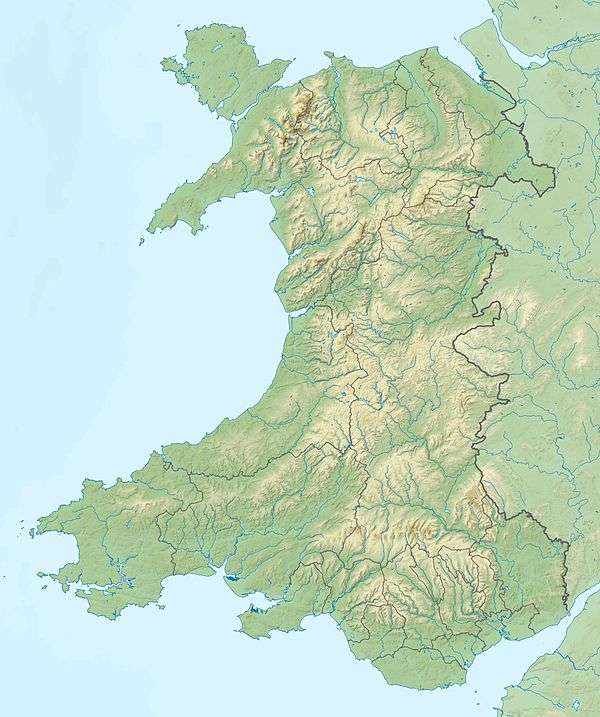Cwm Dyli
Cwm Dyli is the location of a hydro-electric power station on the southern flank of the Snowdon range in North Wales. At the time it was built, it was the largest hydro-electric power station in the United Kingdom. It is Britain's oldest power station, and is believed to be one of the oldest Grid-connected hydro-electric stations in the world.
| Cym Dyli hydro-electric power station | |
|---|---|
 Location of Cym Dyli hydro-electric power station in Wales | |
| Location | Cwm Dyli, Wales |
| Coordinates | 53.0659°N 4.0115°W |
| Opening date | 1905 |
| Reservoir | |
| Creates | Llyn Llydaw |
| Power Station | |
| Installed capacity | 9.8 MW |
History
The station was built in 1905 by the Porthmadog, Beddgelert and South Snowdon Railway company, backed by North Wales Power and Traction Co Ltd to supply electricity to its own electric railway and connected slate quarries and mines. The railway was planned to run through the same valley as the power station and be fed with an electrical feeder, but ran short of funds and the attempt was abandoned.[1]
In August 1906, power from Cwm Dyli was used to power the Oakeley Quarry in Blaenau Ffestiniog carried over the Crimea Pass by a long overhead transmission line at 10,000 volts. Cwm Dyli was claimed to be the largest electricity generating plant of its kind in Great Britain at the time.[2]
Electricity produced here was also used to power the Long Wave Wireless Telegraph transmitting station built by Marconi in 1912 near Waunfawr.
Supplying power directly to the National Grid, it is Britain's oldest power station, and is believed to be one of the oldest Grid-connected hydro-electric stations in the world. It was first commissioned in 1906 and has been in fairly continuous operation since then, although it was closed for upgrading in 1990. A single turbine now produces up to 9.8 megawatts.
Known locally as the "Chapel in the valley", on account of its exterior design, it employed 13 men. Today, however, it is controlled remotely from Dolgarrog in the Conwy valley.
Water for the site primarily comes from Llyn Llydaw, some 320 metres above the power station, where rainfall is very high. The water is carried from the lake through a 2 kilometres (1.2 mi) long pipeline.
The pipeline featured in the James Bond film The World Is Not Enough.
See also
- Npower (UK)
References
- Johnson, Peter (2002). An Illustrated History of the Welsh Highland Railway. Hersham: Oxford Publishing Co. ISBN 9780860935650. OCLC 59498388.
- "Festiniog Quarries Electrified". North Wales Express. 31 August 1906.
External links
- "Cwm Dyli Hydro Site". RWE npower renewables. Archived from the original on 17 April 2011. Retrieved 28 April 2011.